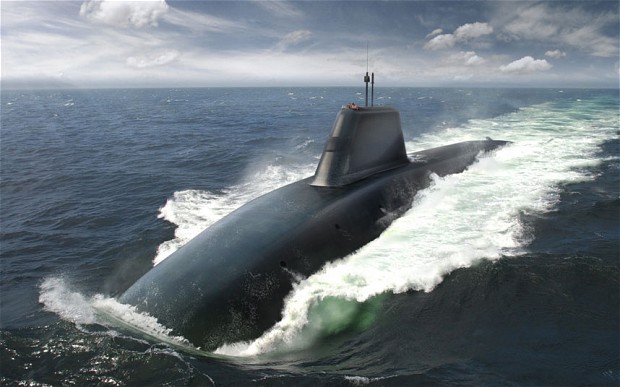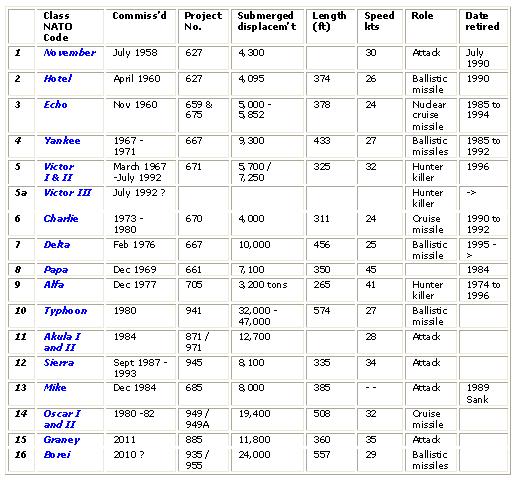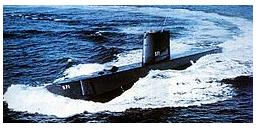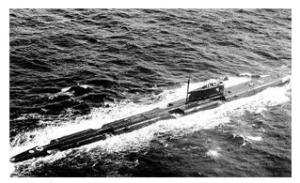Submarine technology - Armada
Submarine technology
Posted on 24 April 2013 by admin
Multiple roles and Robotics,
the Silent World’s Tech Mutations
Recent operations in the Mediterranean Sea during Libyan crisis as well as antipiracy activities in the Indian Ocean, highlighted the importance of underwater platform intelligence and special forces support operations in addition to traditional SSK patrol, deterrence, surveillance of, and attack against, illegal operations.
The importance of such capabilities is well known to Asia-Pacific region countries. These will acquire more submarines and spend more on them over the next two decades than any other region in the world except the United States, according to AMI International analysts. American, European, Russian and more recently Asian shipbuilders are also looking into new littoral warfare and special ops’ support boat designs to cope with customer requirements.
Submarine designers, builders and system providers all are developing new platforms or adapting current production vehicles and systems to meet the new requirements.
Platform Overview
The demanding Australian programme, for instance, that aims at putting 12 new-generation submarines into service from 2025 on, with the capability to conduct long endurance missions at considerable distances from home, equipped with both long-range strike weapon systems to support special forces and unmanned vehicles, is pushing French DCNS to offer a scaled-up version of the Scorpene equipped with the Mesma air independent propulsion system already in service with Pakistan’s Agosta 90B (also sold to India, Malaysia, Chile and Brazil). The later variant in production features an increased displacement compared to previous models, but maintains a conventional diesel-electric propulsion system.
ThyssenKrupp Marine Systems’ Howaldtswerke-Deutsche Werft (HDW) company, on the other hand, is proposing the new Type 216 design with an 89-metre platform, a submerged displacement of 4,000 tonnes and a propulsion system employing a methanol reformer air independent fuel cell system allowing a submerged endurance of up to four weeks. The new design will also have a vertical multipurpose lock aft of the sail for cruise missiles, divers or robots in addition to a new sonar suite.
Navantia proposes a scaled-up version of its S-80 air-independent propulsion SSK under construction for Spanish Navy, with enhancements for the specific programme. The Australian DoD is also looking at the newest Sōryū class SSK in service with the Japan Maritime Self Defence Force (JMSDF).
In Europe, these companies together with Fincantieri and South Korean Daewoo Shipbuilding & marine Engineering (DSME) recently responded to a request for information of the Norwegian Ministry of Defence for a possible replacement of Ula-class submarines (instead of opting for a further life extension operation).
Russian submarine designers and shipyards are continuing to market their latest versions of the Project 636 Kilo class boats, the new Project 677 Lada or Amur 1650 for export, with both types introducing enhancements in platform, command, control, sonar and fire control suites and weapon suites including Klub-S family missiles. According to Russian newspapers, China is also to build Lada/Amur 1650 platforms maintaining a double source of submarines, in case the indigenous industry cannot satisfy developments and procurement requirements.
Current Trends
Current market trends, however are now pushing submarine designers towards littoral and special operation support boats. Various offers are surfacing, including the roughly 900-tonne and 50-metre Andrasta from DCNS, the 1,150-tonne and 58-metre Type 210 from HDW, the 1,100-tonne and 56-metre S1000 from Fincantieri & Rubin – all featuring advanced solutions and able to conduct full-size conventional submarine missions. The same companies and Daewoo Shipbuilding and Maritime Engineering (DSME) are also working on platforms concepts for special operations, as exemplified by the DCNS SMX-26 showed at Euronaval 2012, the HDW Type 200 and the South Korean KSS 500A. The US Special Operations Command allowed foreign companies to participate and recently awarded General Dynamics Electric Boat a contract to design and build a prototype ‘dry’ submersible for evaluation by the US naval forces community, with the participation of Italy’s GSE company, builder of commercial diver lock-out submersibles.
HDW in Germany has pioneered the development of air-independent systems based on fuel-cell technology, as used by German and Italian Type 212As, South Korean and Portuguese Type 214s and lately by the Israeli navy’s Dolphin. In late 2012, Sener engineering group and HDW signed an agreement for the industrial production of an air-independent propulsion system based on a fuel cell methanol reformer technology. The later provides an alternative for producing the hydrogen required by a fuel-cell system, which more suitable for larger platforms with long endurance. A fully engineered submarine system demonstrator is to be ready for end-2013.
Applied to all Swedish navy’s recent submarines, Stirling air-independent propulsion systems also power Singapore navy’s Archer class boats, as well as the future Kockums A26 designed mainly for littoral operations with ocean-going capabilities. Built under license by Japanese Kawasaki Heavy Industry, it is also embarked on the Sōryū class SSK,the newest boat in service with Japan Maritime Self Defence Force. The Australian DoD through its SEA 1000 programme has also showed interest for this method.
Pakistan’s Agosta 90B became the first air-independent propulsion submarine to operate in the Indian Ocean, soon to be joined by nother boats in 2013 – courtesy of the DCNS-supplied Mesma (Module d’Energie Sous-Marine Autonome). It consists of a combustion module fed with liquid oxygen and fuel, and a steam production loop. The Mesma endows a Scorpene SSK with a submerged endurance of more than 21 days. DCNS is proposing the system for current and future P-75I-class programmes and for Australia’s SEA 1000 future submarine programme.
Navantia, for its part, has developed the S-80’s air-independent propulsion , which is based on a bioethanol-processor, fed with bioethanol as fuel, and liquid oxygen, generating high-purity hydrogen. The output feeds a series of
fuel cells provided by
UTC Power in America.
Developing an indigenous submarine technology, India’s Defence Research and Development Organisation (DRDO) is working on air-independent propulsion technology at the Naval Material Research Laboratory (NMRL), which is expected to be available in 2015, and which can be applied to the new-generation P-75I.
China, however, is reported to have a system of its own, which powers the newest Type 041 Yuan and Type 043 Qing SSK class. Developed by 711th Research Institute of China Shipbuilding Heavy Industry, the exact type hasn’t been identified, but according to some sources, it is a Stirling cycle engine.
Russia was an early proponent of air-independent propulsion design, but in the last decade Western European nations took the lead. In late 2011, however, the Rubin design bureau unveiled an electrochemical generator plant based on the earlier Kristall-27E solution, which employs fuel cells and the reforming of diesel fuel for hydrogen production by means of an electro-mechanical generator. Reported to be available for production in less than three years’ time, it is being offered to India via the Amur 1650 project.
Combat Systems
The covertness offered by underwater platforms and the new generation of sensors and weapon systems provide the conventional submariners with detection the range required for wide-area tactical picture compilation and long-range engagements, but also place additional demands on the warfare team in the submarine control room.
The latest generation of submarine combat systems offer far greater functional integration of sensors, tactical data handling and weapon systems. The latest trend is wholesale migration toward scalable commercial off-the-shelf -based open system architectures, a shift seen to offer multiple advantages. Their design and development costs can be significantly reduced by avoiding the use of proprietary products and eliminating vendor restrictions at all system levels. Moreover the regular upgrading of computer systems enables rapid additional operational capability to be inserted to meet emerging threats while potential shared computing environments allows for reduced hardware footprint and support rationalisation.
One of the largest provider of SSK combat systems is Atlas Elektronik, with variants of its Isus (Integrated submarine combat system) integrated command, weapon control and sonar system, which forms the core for widely sold HDW Type 209 and Type 214 export types. The Isus roadmap showed an increasing reliance on cots technology and the migration toward open-standard architecture, hardware and system application software, including emphasis on new sonar functionality and sonar manager functions.
Although the Subtics (Submarine Tactical Integrated Combat System) was closely connected to French-built conventional submarines export sales (Pakistan’s Agosta 90B and Scorpene boats to Brazil, Chile, India and Malaysia), DCNS was able to expand its customer range to South America and southeast Asia for German- and Swedish-built submarines.
The Subtics results from DCNS and Thales shared experience with French navy submarine sonar, command and weapon control systems (including the Sycobs system), adopting open standards, a fully redundant design and Thales Underwater Systems TSM 2233 sonar suite.
Up north, Kongsberg Defence Systems of Norway has sold its MSI-90U Mk2 combat and weapon system to the navies of Norway (Ula class), Germany and Italy (Type 212) and more recently Indonesia (Type 209 built by South Korea’s DSME) and South Korean navy’s Type 214 and derivatives. The Italian navy’s latest Type 212 boats will feature the Link 11/16 functionality, navigation package and Wass Black Shark heavyweight torpedo integration.
Saab is involved in the continuing upgrading of Swedish navy’s SesuB command and fire-control suite on its Type A-17 and -19 submarines, while the latest SesuB version employs cots-based open architecture will equip the new Type A-26. The Netherlands navy’s four Walrus-class submarines are being upgraded with Ministry of Defence-provided Guardion common core system also used by surface vessels.
Lockheed Martin’s MS2 and Navantia’s combat systems house Faba are partners in the development of the fully integrated Core Combat System for the Spanish Navy’s four new S-80A class submarine under construction. Based on Lockheed Martin Subics (submarine integrated combat system) open architecture model, it integrates Spanish hardware and software provided by Spanish companies, including Sainsel and Saes. The American company is also responsible for the Brazilian Type 209 upgrade.
Working in conjunction with America and Australia, Raytheon supplied the AN/BYG-1(V)8 combat control system as part of the Royal Australian Navy Collins-class replacement combat system programme. Already installed across the US Navy’s nuclear submarine fleet and being periodically updated, the AN/BYG-1 calls on commercial open standards, allowing the rapid insertion of additional sensors and/or weapons. It is expected to become fully operational on all Australian navy boats by 2016, and is reported to become the basis of the SEA 1000 future submarine combat system.
Sonar
Spiral upgrading and cots insertion are the main themes in sonar suite development and enhancements. Thales is promoting its S-Cube multi-mission sonar suite with an open system architecture (variant of TSM2233) using cots hardware and software and combining Fast adaptive beam-forming technique, large PVDF planar flank array and a simple-to-use ‘look and feel’ human-computer interface. Scalable for all size of submarine from coastal to oceanic, the suite has already been ordered for Brazil’s and India’s Scorpenes as well as Ecuador’s HDW Type 209/1300s.
Thales Australia has been contracted to upgrade Australian navy’s Collins class TSM 2233 sonar suite.
L-3 Elac Nautik is involved in providing subsystems to enhance acoustic packages already in service, including the Netherlands’ Walrus-class boats.
The other non-nuclear sonar providers are Atlas Elektronik and Lockheed Martin. The German company is proposing the latest versions of its Isus already ordered for Turkey’s six new Type 214 submarines, which introduces new or improved signal processing, such as advanced ranging sonar techniques, smarter adaptive beam-forming algorithms, optimised contact tracking and reduced operator workload. The company is also looking to new sonar functionalities as well as working on sotram (sonar track manager) functions to improve tracking management. Lockheed Martin together with Saes in Spain are providing most of the Spanish navy’s S-80 sonar suite.
Non-penetrating masts resulting from advanced elector-optical sensor techniques offer a distinct advantage over direct-view periscopes. Most of the specialists in periscope and related sensors, such as Sagem, Carl Zeiss, Thales, Gabler and L-3 Communications/Calzoni, are involved in activities aimed at providing multispectral EO/IR, quick identification and recording capabilities. The latest two companies have respectively developed the Triple M and the Universal Modular Mast that are capable of accommodating a flying drone.
To maintain its stealthiness a submarine relies on low-probability of intercept search and navigation radars, such as those supplied by Thales, Kelvin and Sperry Marine as well as on both radar and communications ESM suites.
Thales, Elettronica, Saab, EDO, Medav, Lockheed Martin and Elbit are all looking at ways of enhancing the capability of their electronic warfare system families in view of the increasingly challenging littoral warfare environment. In case of detection and attack by other submarines or surface vessels, reliance can then be handed over to Wass C303, Ultra Eletronics Scad 101, DCNS Nemesis and Contralto and Rafael Torbuster decoys – to name but a few – to defeat torpedo attacks.
The new operational scenarios require joint and combined operation of sea, land and air forces with communications capabilities that extend to submerged patrol stations. Communications specialist such as Thales, Indra, Selex ES, Lockheed Martin, Saab, L-3 Communications Marinekommunikation have developed complete packages including satcom capabilities (for instance the Thales Aquilon with Divesat satcom terminal) and/or communications buoy systems like the Callisto from Gabler, the Gateway from a consortium led by Atlas Elektronik, not to mention Lockheed Martin and Ultra Electronics solutions for the US Navy’s Communications at Speed and Depth (CSD) facility with both tethered and free-floating system.
Heavy Torpedo Resurrection
The threat from diesel-electric and later air-independent propulsion submarines in the demanding littoral warfare arena, enhanced by increased sonar performance, is casting fresh light on the need for new generation heavy-weight torpedoes or upgrade kits for in-service weapons. Required are speeds of around 50 knots, ranges superior to 50 km and sophisticated acoustic guidance. While in recent years a number of navies have for upgrading solutions (Raytheon Mk48, Atlas Elektronik Seahake, BAE Systems Spearfish, Saab Tp62 and Russian Federation industries’ TEST and UGST), some companies have turned to fresh developments. This is the case of Italy’s Wass and more recently French DCNS and South Korean LIG Nex1 who have completed or entered the development of new underwater weapons.
In April 2008, the French DGA contracted DCNS as prime contractor and Thales Underwater Systems as acoustic guidance provider, to develop and produce the F21 for the new French Navy’s Barracuda nuclear SSN.
The F21 will feature an electrical propulsion system based on the DCNS-supplied MU-90 lightweight torpedo Aluminium-Silver-Oxide technology battery, providing 50+km range and 50+ knots speed, according to DCNS. Equipped with a planar array and fully digital acoustic head, the F21 is also to comply with demanding nuclear-powered platform safety requirements, including insensitive warhead and safe detonation technology.
Italy’s Wass is producing the Black Shark, which is already in service with Chilean, Malaysian, Portuguese and (allegedly) Singaporean navies. It also is being integrated on board Italian navy’s Type 212A Todaro class AIP submarines, and marketed in India. To enhance training and personnel proficiency while reducing costs, Wass is introducing a rechargeable lithium-polymer type propulsion battery derived from automotive sector. This innovative solution will allow multiple exercise launches before depot maintenance is required. Optimized for deep and very shallow (coastal) water deployment, the Black Shark features a 50+ knot speed and 50km+ range, while the advanced acoustic offers long-range detection and simultaneous multi-target capabilities.
Countering Bolt from the Blue
In response to customer concerns as to the increased anti-submarine threat posed by maritime patrol aircraft and helicopter, DCNS recently unveiled plans for a compact, canister-based submarine air-defence weapon system based on the MBDA Mistral short-range infrared homing missile, which is to be fired from periscope depth in lock-on before launch mode with data provided by the submarine’s optronic mast.
A German consortium, including HDW, Diehl BGT Defence and Kongsberg, developed and successfully tested the Idas (Interactive Defence For Air-attacked Submarine) submarine weapon system. Under advanced development, the Idas is an optical fibre-guided missile system which is canister-launched from torpedo tubes and designed to engage not only airborne ASW threats such as helicopters, but also surface ships and coastal targets. Raytheon has however successfully tested a canister-launched version of the AIM-9X short-range IIR guided missile on a ground test-range in 2009 , but American and other navies prefer to embark ASW or strike weapons, maintaining submarine stealth and low-acoustic signature.
Underwater Robotics
In addition to special forces operators and vehicles, submarines have been modified to act as mothership for so-called unmanned underwater vehicles (UUV). Although both US and European industries and operators have been playing with numerous solutions, technology maturation has only recently allowed the US Navy to launch an LDUUV (Large Displacement UUV) programme. The resultant vehicle is planned to have long endurance (up to 30-45 days), and sufficient operational speed, autonomy and payload capacity to perform “independent” and clandestine operations in forward areas. Designed for launch and recovery from a variety of platforms including SSGN, Virginia SSN via their large-diameter tubes, but also surface ships, the system, for which a request for proposal is expected to be issued in 2014, is planned for operational service around the end of the decade
But the real revolution in underwater operations will come from the American Defense Advanced Research Projects Agency in the form of an uninhabited vessel that can shadow a manned sub throughout its patrol. The agency has recently selected Siac to lead the design and construction of an operational prototype of an anti-submarine continuous trail unmanned vessel known as the Actuv. The aim is to demonstrate than an autonomous vessel that can track a quiet diesel-electric submarine for up to 80 days and over a distance of 6,200km, avoiding other shipping and with minimal human input. At-sea testing is planned for 2015.
Submarine Trends In Asia Pacific: Air-Independent Propulsion A Game Changer? - Analysis Eurasia Review
Submarine Trends in Asia Pacific:
Air-Independent Propulsion A Game Changer?
By Michael Raska
Synopsis
The contending strategic realities of the Asia-Pacific region compel states to adopt innovations of their rivals.
This is the case for new classes of conventional submarine designs, which incorporate an array of innovative
technologies in order to maximise their survivability and lethality in diverse maritime operations.
Commentary
WHILE EUROPE and North America remain key submarine markets, China’s ongoing military modernisation
coupled with contending international relations in the Asia-Pacific will increasingly drive submarine procurement
in the region over the next decade. In 2011, the total submarine market in Asia-Pacific is estimated at US$4.4
billion, and for the next decade, submarine expenditures are projected to US$46 billion.
With changing strategic realities, Asian navies aim to become increasingly flexible, and capable of varying
mission profiles: from countering traditional coastal defence missions to protecting sea lanes and
communication lines. Simultaneously, submarines are increasingly valuable strategic resource for both
electronic and signal intelligence. To enhance the varying operational capabilities, increase submerged
endurance and stealth, installing viable Air-independent propulsion systems is thus becoming a strategic
necessity.
Advantages of AIP systems
Designed to enhance the performance of modern conventional (diesel-electric) submarines AIP is a key
emerging technology that essentially provides a “closed cycle” operation through a low-power electrical source
supplementing the battery, which may extend the submarine’s underwater endurance up to two weeks or more.
AIP systems close the endurance gap between nuclear and conventional submarines, and mitigate increasing
risks of detection caused by advanced anti-submarine warfare technologies - from modern electro-optical
systems and surface radars to magnetic sensors, active and passive sonars, and airborne surveillance radars.
Advanced AIP technologies thus promise significant operational advantages and tactical flexibility.
In theory, there are four primary AIP designs currently available: (1) closed-cycle diesel engines; (2) closedcycle steam turbines; (3) Stirling-cycle heat engines with external combustion, and (4) hydrogen-oxygen fuel
RSIS Commentaries are intended to provide timely and, where appropriate, policy relevant background and analysis of
contemporary developments. The views of the authors are their own and do not represent the official position of the
S.Rajaratnam School of International Studies, NTU. These commentaries may be reproduced electronically or in print with
prior permission from RSIS. Due recognition must be given to the author or authors and RSIS. Please email:
RSISPublication@ntu.edu.sg or call (+65) 6790 6982 to speak to the Editor RSIS Commentaries, Yang Razali Kassim.
RSIS COMMENTARIES2
cells.
Each provides a different solution with particular advantages as well as limitations in relation to
performance, safety, and cost factors.
Since the early years of the Cold War, while major naval powers shifted to nuclear propulsion, smaller navies -
particularly in Europe (Germany, Sweden, Spain, Italy and France) continued to develop and rely on
conventional diesel-electric submarine fleets, given their lower cost and operational relevance for coastal
defence. Traditionally, however, these submarines were highly vulnerable to various types of sensors -
acoustic, visual, thermal and air - particularly when running on engines.
AIP systems in Asian navies
On the other hand, when running on batteries, these submarines became very quiet and difficult to detect, yet
their battery capacity, discharge rate, and indiscretion rate (the ratio of diesel running time to total running time)
substantially limited their underwater endurance. To overcome these baseline limitations, naval innovation in
propulsion technologies over the past two decades has shifted toward AIP systems.
There is a variance, however, in the procurement of AIP systems in select Asian navies. For example, the only
AIP steam-turbine system currently available is the French “MESMA” (Module d’Energie Sous-Marine
Autonome) module, operational on Pakistan Navy’s two Agosta 90-B class submarines.
Swedish-Kockum designed Stirling AIP technology is installed on Singapore Navy’s two Archer–class
submarines, and Japan’s new Soryu-class submarines. The Chinese PLA Navy’s Type 041 Yuan and Type 043
Qing class submarines are also reportedly using Stirling technology. Meanwhile, the Republic of Korea Navy
has ordered nine Type 214 submarines with German HDW AIP fuel cell technologies. Three first batch models
of the new Son Won-Il class had entered service since 2007, and six second batch models will enter service
from 2012.
Limitations and constraints
Notwithstanding the diverse AIP technologies, the overall effectiveness of each system will depend on how well
it is integrated with other critical systems that ensure optimal submarine functions: power systems, sensors
systems, safety systems, navigation systems, command, control, and communication systems, weapons
systems, and climate control systems. In this context, any critical failure of an AIP during a combat mission or
contested areas will mitigate survivability factors as well as tactical options.
Indeed, each AIP system design comes with an array of technological limitations, vulnerabilities, and risks,
particularly in submerged operations – from the specific acoustic signatures produced by select AIP systems in
specific operating regimes, to technical vulnerabilities in storing oxidizer/fuel, as well as their maintenance
regime. At the same time, new anti-submarine warfare sensor technologies may provide viable AIP
countermeasures.
Ultimately, AIP-related technological innovation and breakthroughs may not guarantee operational success –
strategy, operational concepts, tactical development, leadership, training, and morale will continue to play as
important role as emerging technologies and their operational capabilities.
Michael Raska is a Research Fellow at the Institute of Defence and Strategic Studies, a constituent unit of the
S. Rajaratnam School of International Studies (RSIS), Nanyang Technological University in Singapore.


























